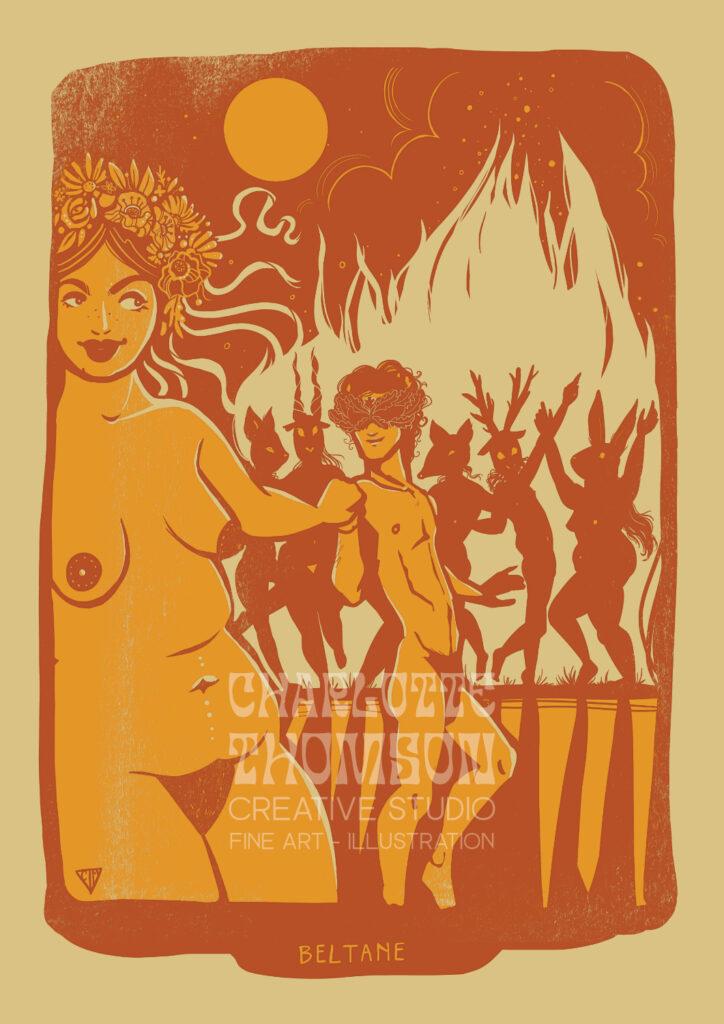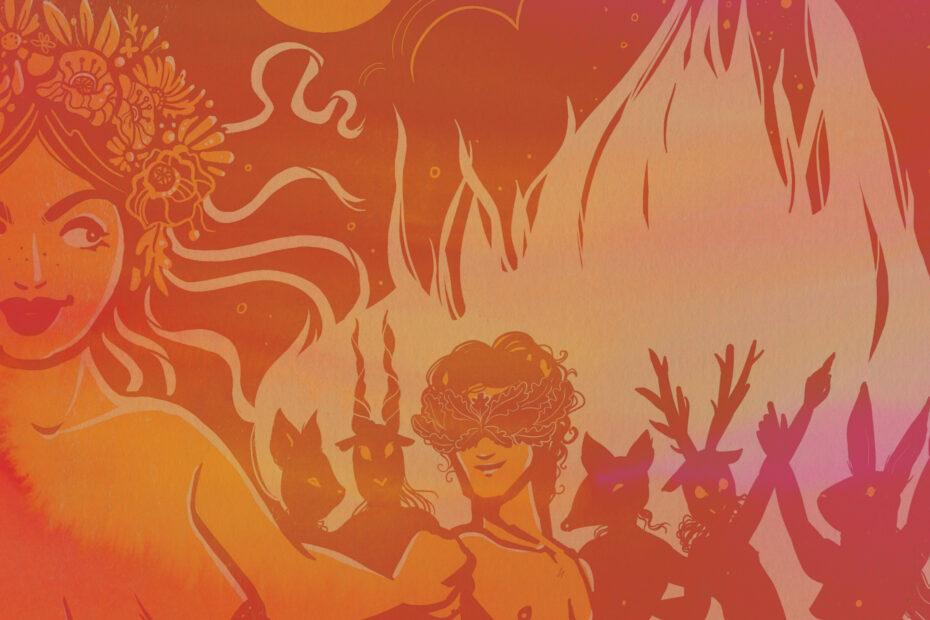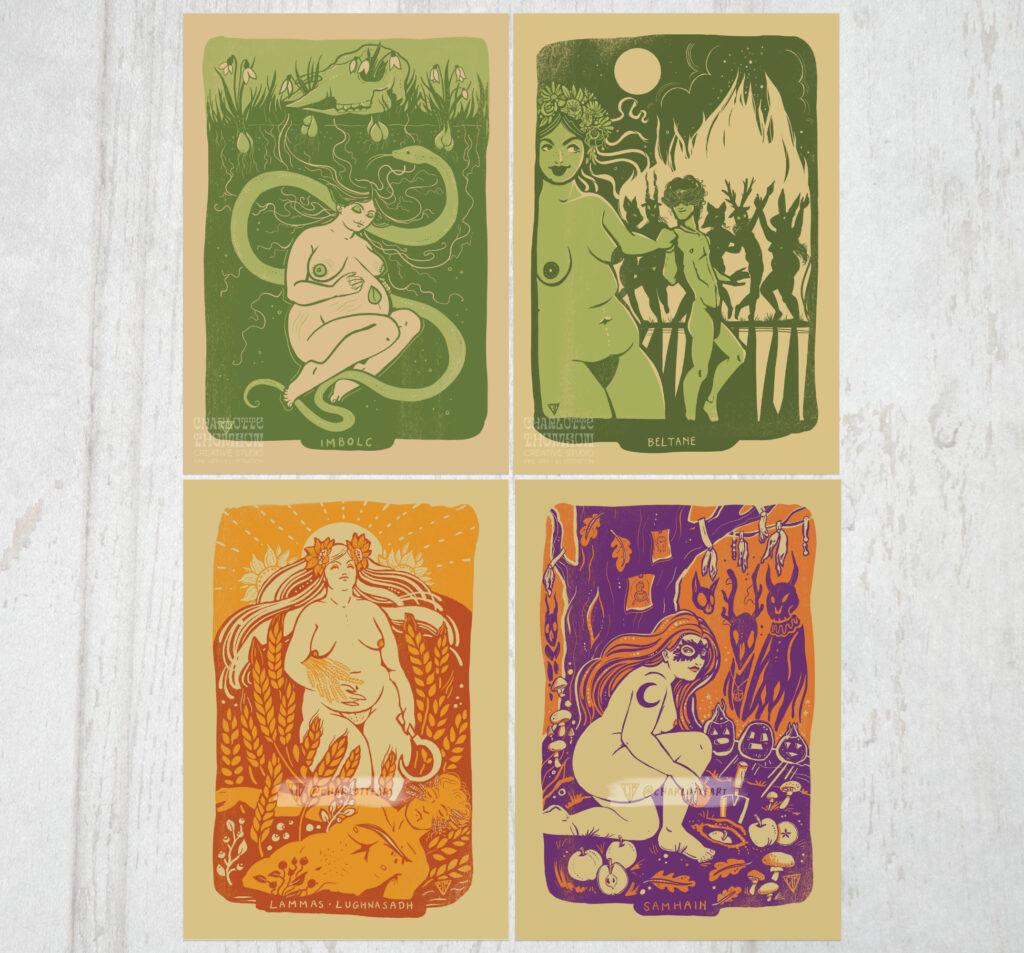Art can be a wonderful way to explore, represent & honour the festivals of the Wheel of the Year like Beltane, When we use Art as Magic it becomes central to the way we connect to the changing seasons.
(Note that I live in the Northern Hemisphere, in the East Midlands in the United Kingdom, and my suggestions are based on my location, local flora and fauna and climate.)
What is Beltane?
Beltane is generally celebrated on May 1st and is a festival that celebrates growth, sexuality, love and fertility. It is traditionally one of the key ‘cross quarter’ Gaelic festivals (along with Imbolc, Samhain, Lughnasadh) and has seen a revival with neo-Pagans.
The earliest mention of Beltane is in early Irish Medieval texts which mention it as a time when cattle would be driven into the summer pasture fields and many agricultural and fertility rituals and traditions took place.
Beltane Traditions
Cattle would be driven between two bonfires for protection, and people would walk around bonfires and jump over the embers for good luck. The smoke may well have killed parasites. People would apply the ashes from the bonfires to their skin, to livestock and would sprinkle it on crops for protection.
I was also traditional to wash your face with the morning dew on Beltane to stay youthful, to make offerings to the Fae folk, visit Holy Wells and make offerings to local deities and decorate your home with yellow flowers, ribbons and a decorate a thorny ‘May bush’ brought into the home.
Modern Beltane festivals often take inspiration from European May Day festivals and may include representations of the marriage of the ‘May Queen’ and the ‘Green Man’ and may feature Maypole dancing. In some areas of Scotland mock-sacrificial burnings take place, (where thankfully nobody is hurt!) Could this be a remnant of a older, sacrificial tradition?
As with many of the festivals in the Wheel of the Year, Beltane has become a melting pot of different traditions, mythology, ritual and folklore. If like me, you’re in Nottingham, come and check out the Beltane Pagan Market where local traders (myself included), musicians, performers and rituals led by local Pagans take place.
If you want to experience a truly spectacular, fiery Beltane Festival, check out the yearly one that takes place on Calton Hill in Edinburgh.

Colours
Firey shades of orange, red and yellow, Spring-like shades of green.
What is the ‘Wheel of the Year’?
The Wheel of the Year was devised by Gerald Gardner, the founder of Wicca and Ross Nichols the founder of the Order of Bards, Ovates and Druids, in the 1950’s and 60’s. It brings together traditionally observed agricultural festivals with the solstices and equinoxes. This forms a balanced, cyclical, year-long calendar, which encourages neo-Pagans and Witches of different traditions and practices to come together to celebrate.
The individual festivals are known by an amalgamation of Celtic and Germanic festival names. The festivals are celebrated with feasts, ritual, stories, symbolism and traditions new, old …and some not as old as we might think! It’s a melting pot of ideas, a revival and reconstruction of the past and a structure where creative interpretation flourishes. It is a beautiful way to connect to and celebrate the seasonal changes of the natural world and to friends who follow a Pagan path.

